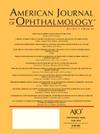同时行白内障手术和角膜内皮移植术的11种人工晶状体度数计算公式的比较。
IF 4.1
1区 医学
Q1 OPHTHALMOLOGY
引用次数: 0
摘要
目的评价11种人工晶状体(IOL)计算公式在角膜内皮移植术(DMEK)联合白内障手术(DMEK)中的准确性。设计对连续病例系列进行回顾性准确性和有效性分析。方法选取2016 - 2023年在德国法兰克福歌德大学眼科接受三次DMEK治疗的80例患者80只眼(女52例,男28例),平均年龄67.08±7.64岁(45 ~ 83岁)。术前使用IOLMaster 700 (Carl Zeiss mediitec)进行生物测量。通过比较平均预测误差(ME)和平均、中位数绝对预测误差(MAE和MedAE)进行统计评价。通过“IOLup1D”方法对所有公式进行了调整和不调整的计算。结果调整后的IOLup1D配方效果优于未调整的配方。Barrett Universal II (IOLup1D)的MedAE最低(0.64屈光度[D]),其次是术后使用人工智能和线性算法进行的球面等效预测,分别是debellemani本文章由计算机程序翻译,如有差异,请以英文原文为准。
Comparison of 11 intraocular lens power calculation formulas in eyes undergoing simultaneous cataract surgery and Descemet membrane endothelial keratoplasty.
PURPOSE
To evaluate the accuracy of 11 intraocular lens (IOL) calculation formulas in eyes undergoing Descemet membrane endothelial keratoplasty (DMEK) combined with cataract surgery (triple DMEK).
DESIGN
Retrospective accuracy and validity analysis with a consecutive case series.
METHODS
We included 80 eyes of 80 patients (52 females, 28 males) with a mean age of 67.08 ± 7.64 years (range: 45 to 83 years) receiving triple DMEK at the Department of Ophthalmology, Goethe University, Frankfurt, Germany between 2016 and 2023. Preoperative biometry measurements were obtained from IOLMaster 700 (Carl Zeiss Meditec). Statistic evaluation was performed by comparison of the mean prediction error (ME) and the mean and median absolute prediction error (MAE and MedAE). Calculations were performed with and without adjustment by the "IOLup1D" method for all formulas.
RESULTS
Adjusted IOLup1D formulas showed better results than the unadjusted formulas. The MedAE was lowest for Barrett Universal II (IOLup1D) (0.64 diopters [D]) followed by Postoperative spherical Equivalent prediction using Artificial intelligence and Linear algorithms, by Debellemaniére, Gatinel, and Saad (IOLup1D) (0.66 D), Emmetropia Verifying Optical (IOLup1D) (0.67 D), Holladay 2 (IOLup1D) (0.70 D), Hoffer Q Savini/Taroni (IOLup1D) (0.71 D), Kane (IOLup1D) and T2 (IOLup1D) (0.72 D each), Haigis (IOLup1D) and Holladay 1 (IOLup1D) (0.73 D each). The highest MedAE were found with Hill-Radial Basis Function (IOLup1D) and Sanders-Retzlaff-Kraff/theoretical (IOLup1D) (both 0.74 D). Regarding eyes within prediction errors of ±0.50 D, again Barrett Universal II (IOLup1D) (40.0%) performed best. The lowest percentage of eyes within a predicted refraction of ±0.50 D were seen with the Emmetropia Verifying Optical (IOLup1D), Kane (IOLup1D) and Holladay 2 (IOLup1D) (33.8% each).
CONCLUSION
Prediction of the postoperative refraction in eyes requiring cataract surgery and DMEK is still challenging and not as accurate, as in healthy eyes without corneal abnormalities. In our case series, the Barrett Universal II formula achieved the overall best results. Although not being statistically significant, this outcome should be taken into account, when calculating IOL power in patients undergoing cataract surgery combined with DMEK.
求助全文
通过发布文献求助,成功后即可免费获取论文全文。
去求助
来源期刊
CiteScore
9.20
自引率
7.10%
发文量
406
审稿时长
36 days
期刊介绍:
The American Journal of Ophthalmology is a peer-reviewed, scientific publication that welcomes the submission of original, previously unpublished manuscripts directed to ophthalmologists and visual science specialists describing clinical investigations, clinical observations, and clinically relevant laboratory investigations. Published monthly since 1884, the full text of the American Journal of Ophthalmology and supplementary material are also presented online at www.AJO.com and on ScienceDirect.
The American Journal of Ophthalmology publishes Full-Length Articles, Perspectives, Editorials, Correspondences, Books Reports and Announcements. Brief Reports and Case Reports are no longer published. We recommend submitting Brief Reports and Case Reports to our companion publication, the American Journal of Ophthalmology Case Reports.
Manuscripts are accepted with the understanding that they have not been and will not be published elsewhere substantially in any format, and that there are no ethical problems with the content or data collection. Authors may be requested to produce the data upon which the manuscript is based and to answer expeditiously any questions about the manuscript or its authors.

 求助内容:
求助内容: 应助结果提醒方式:
应助结果提醒方式:


